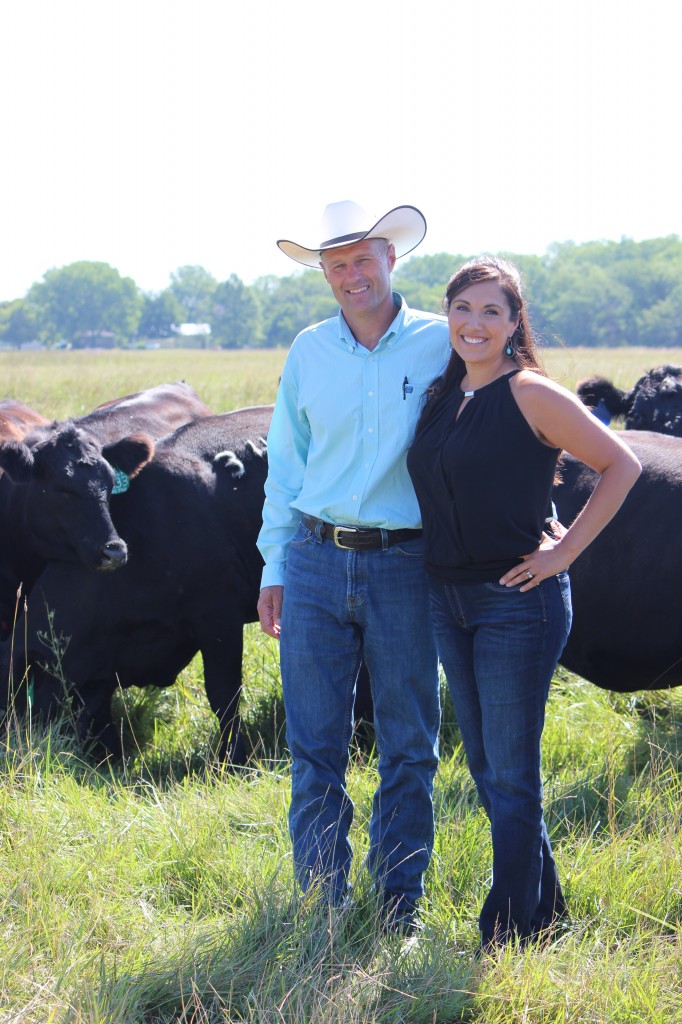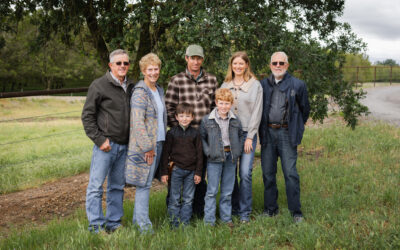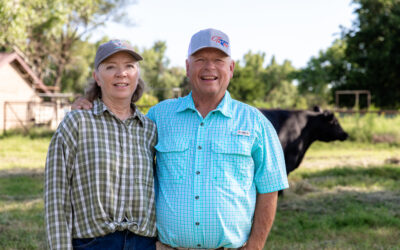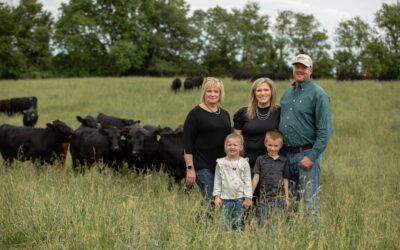
Exponential Impact
 What do you get when a researcher and a CPA decide to buy 6 registered Angus cows?
What do you get when a researcher and a CPA decide to buy 6 registered Angus cows?
Well twenty years later Trevor and Torri Lienemann of Princeton, Neb., have four kids, a 300-cow seedstock operation and lots and lots of data.
It was the numbers that Trevor had never been able to see before in cattle that helped them quickly multiply their cowherd. The more he learned about cattle, the more their operation grew until 2008 he quit the day job to become a full-time, first-generation cattle rancher.
“Being called the business breed and being a CPA, the two meshed very well,” says Torri.
Not having a background in Angus or cattle, Trevor became a student of the business and the breed. Once he learned something he yearned to share it with his bull customers. But not until the data had been verified, of course.
While he says they were in their “rookie season” for the first 10 years, Trevor longed to be able to feed out his cattle to validate his ultrasound data. When corn reached $7 per bushel he took the plunge and started a customer buyback program.
His commitment to numbers paid off. His first group of fed cattle earned 65% Certified Angus Beef® acceptance, and his customer-bought cattle earned 35% CAB with the whole group grading 100% Choice.
A seedstock producer who concentrates on the end product, Trevor works hard to help his customers maintain the same vision.
“We work to help our commercial guys realize that their customer isn’t the sale barn where they deliver their cattle; their customer is the consumers in the grocery store and the retail outlets for beef,” says Trevor.
The buyback program brings it full circle for this family. Trevor admits that if he could collect data on the eating quality of the steaks his cattle produce, he would gladly apply that to his herd selections, too.
“We realize our effect on the industry is exponential through our bull sales. When you start doing the math on selling 50 bulls a year that will breed 25 cows per year and last about four years, you are starting to effect a lot of individual carcasses out there,” says Trevor.
“And a lot of eating experiences, too,” his daughter Maci adds.
What started with just six cows, now affects an immeasurable number of meals – and the Lienemanns are working hard to make sure those eating experiences are top quality.
Until next time,
Nicole
For more about the Lienemanns, check out future editions of the Angus Journal.
You may also like
Legacy in the Golden Land
On a quiet stretch of Northern California rangeland, a different story unfolds. The Borror family’s legacy modestly speaks through the cattle they raise, the ground they steward. The generations who’ve made a life here demonstrate commitment to doing things right, even when no one is watching.
Helping Hands, Helping Herds
“When I die, I want to come back as one of your cows,” murmurs a friend to Steve Zybach. Full to the brim from an alfalfa ration every day, bountiful fields of lovegrass stretched out across the Texas Panhandle—and owners who leave no ounce of cattle care up for question. The Zybachs’ motivation for this level of dedication to their Angus cattle is simply love.
An Ambassador for All
Joanie, with daughter Lindsey and her husband, Adam Hall, raise registered Angus cattle with two primary goals: producing high-quality seedstock that perform well in a wide variety of environments and ensuring end-user satisfaction. Those goals tie everything together, from promoting Angus to other producers to sharing their story with CAB partners and beef consumers.



